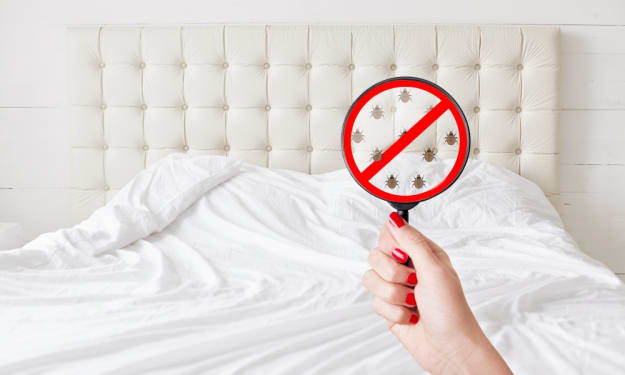Breathing Exercises to Reduce Stress and Improve Sleep
Help yourself to sleep like a baby!

Adult life comes with so many responsibilities that sometimes we're completely engrossed with worry and anxiety. This is often to the point that we can't seem to focus on the things that truly matter.
However, practicing relaxation techniques and breathing exercises will help you be present at the moment, reduce stress, and improve your sleep habits. It can also help you if you suffer from snoring and other sleep disorders.
In this article, you'll learn
- How breathing exercises work.
- The different breathing exercises help improve sleep and reduce stress and anxiety.
- How often do you do breathing exercises.
How do breathing exercises work?
What is deep breathing?
Deep breathing is the basis of breathing exercises. It is also known as diaphragmatic breathing, which causes more air to get into your lungs, causing a state of calm and reducing anxiety.

The clinical benefits of deep breathing:
- Increased oxygen intake
- Reducing tension in the abdomen and in the facial muscles relieves
- Reduced blood pressure
- Reduced heart rate
Breathing exercises you can try
These breathing exercises are fun and easy to carry out with no equipment. If you want to look good while doing these exercises, then you could skip No 4 ;)
Pouty lip breathing
Anyone can try this out. You can do this anywhere, whether standing, sitting, or lying on your back.
To get started:
- Relax the muscles in your upper body, particularly your shoulders and neck.
- With your mouth closed, breathe in really slowly and count to two.
- Pout or purse your lip and count to 4.
- Slowly breathe out through your pursed lips.
This practice helps you improve your breathing pattern and helps you relax.
Diaphragmatic breathing
This is one of the best breathing exercises to improve sleep. To get right into it:
- Using a pillow to support your head, lie on your back.
- Bend your knees slightly and place a hand on your chest.
- Place the other hand on the diaphragm, i.e., below the ribcage.
- Inhale through the nose and feel your belly fill up with air as it presses into your hand.
- Exhale through pursed lips like in the above exercise while tightening your core as you do so
Keep the other hand still and practice this exercise before bedtime.
Alternate nostril exercise
This breathing exercise may be tricky, but it also helps improve sleep and reduce anxiety. It also wonders for heart health as it helps improve cardiovascular functioning and reduce high blood pressure or hypertension.
To start this exercise:
- Wash your hands.
- Sit comfortably on a chair.
- Lift your right hand, so it's directly above your nose, and widen your fingers.
- Press your index and middle fingers down on your face with the other in the air.
- Take a breath and exhale. Inhale through your left nostril while covering your right with your thumb.
- Cover the left nostril with your ring and pinky finger.
- Set the thumb free and inhale through the right nostril. Do this about four to five times.

Lions' breath exercise
This exercise looks wrong but makes you feel amazing. You could try this when you're all alone; it'd help you release tension in your face and upper body. To start this exercise,
- Place your seat in a comfortable position with your legs crossed.
- Place your fingers on your knee and spread those fingers.
- Take a deep breath and leave your eyes wide open.
- Stick out your tongue, so the tip is around your chin level.
- Simultaneously exhale through your mouth, tense your throat muscles, and say ha in three counts.
- Practice this exercise for two minutes.
Breathing exercise in a box
You don't have to sit in a literal box for this exercise. The principle behind this is with each breath you take and exhale; you remember the pattern for the length of each side.
To carry out this exercise:
- Begin with an exhale and then inhale slowly while counting to 4.
- Hold your breath; count to four.
- Release your breath and count to four.
You visualize one side of a box with each breath taken or released.
Equal breathing exercises
As the name implies, equal breathing means focusing on making the time for inhaling and exhaling the same. This is an ancient exercise that teaches balance and stability.
To get started:
- Take a comfortable seat.
- Inhale and exhale through your nostrils.
- Choose a word to repeat during this relaxation exercise to prevent your mind from wandering.
- Add a natural pause between each exhale and inhale
- Practice this for four minutes every day.
Focus breathing technique
This focus technique/ breathing exercise employs the use of words. Like in equal breathing exercises, you get to choose a word, but this time, it should be a word that makes you feel relaxed or happy.
t could be a single word or phrase, such as:
- Let go
- Peace
- Clarity
You can choose any word that resonates with you better. To start the breath focus technique, you have to:
- Sit comfortably in a quiet location.
- Pay attention to every breath you take.
- Take regular breaths accompanied by deep breaths and do this several times.
Observe the difference between how your body responds with each breath and the expansion of your diaphragm. You can make your mental picture more visually stimulating by placing your hand over your belly to feel each rise and fall.
- Envision that every inhaled breath is a fresh breath of positivity that makes you less tense or anxious.
- With every exhaled breath, imagine that all your worries and troubles are leaving you, causing you to feel as light as a feather.

How often should you do breathing exercises?
It is safe to do breathing exercises multiple times a day or when you feel overwhelmed or worried. Incorporating these exercises daily can help you live a more rewarding and fulfilling life.
Conclusion
Every day comes with its positives, and sometimes it's easy to focus on all the things we can't solve. Focusing on every breath can help you be more present, mindful, and in the driver's seat of your emotions. If you also have trouble sleeping, exercises like these can help you feel more relaxed and rested, replenishing your energy stores and alleviating stress and worry.
It is important to note that if an external stressor is causing your worry or bad sleeping habits, such as a thing or situation, you may have to take extra steps to remove this stressor or find ways to solve the problem.






Comments
There are no comments for this story
Be the first to respond and start the conversation.